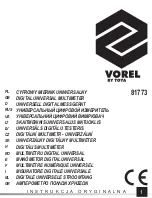
Use Macros to
Minimize Command
Parsing Time
Macros provide the fastest programming method when it is necessary to
change functions from one measurement to the next. If you are not
changing functions, then it is just as fast to repeat a measurement using
INIT;:FETCH?
or
READ?
.
Program with macros if more than one scan list or function is needed. The
firmware has allocated space for approximately 50 macros.
OUTPUT @Dmm;"*PMC;*EMC 1" !
To initialize Purge old macros.
!
Enable macros
.
!
Define the MACRO. Choose a short name such as M1
.
!
The #225 is an IEEE 488.2 arbitrary block header in the form #ndd
!
# means block specifier
n is the number of dd to follow
dd is the number of characters
!
OUTPUT @Dmm;"*DMC ""M1"",#234MEAS:VOLT:DC?,300,1000, (@100:115)"
!
To use the Macros
.
OUTPUT @Dmm;"M1"
ENTER @Dmm;Reading(*) !
This example is doing ASCII transfer
.
Set Autozeroing to
ONCE or OFF
Autozeroing causes the A/D to alternately measure its internal zero and the
external signal. Autozeroing improves reading accuracy; however, it
reduces reading speed by
1
⁄
2
.
CAL:ZERO:AUTO ON
----The zero will be measured before each
measurement.
CAL:ZERO:AUTO OFF
---- No new zero readings will be made.
CAL:ZERO:AUTO ONCE
---- Does one Autozeroing operation when the
command is received and also sets the mode
to autozeroing OFF.
The zero may vary over time, especially as the room temperature varies.
Noticeable changes can be expected over many minutes or hours. However,
over a few seconds the changes should be very small.
When a scan list is used the readings occur as a burst, thus little is gained by
auto zeroing each reading.
274 Measurement Speed and Accuracy Tradeoffs
Appendix D
Artisan Technology Group - Quality Instrumentation ... Guaranteed | (888) 88-SOURCE | www.artisantg.com
















































